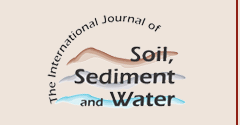Abstract
Techniques for the hydrocarbon fingerprinting and age-dating of petroleum contamination in environmental matrices are undergoing major advancements in the environmental forensic community at the present time. Techniques that were reliable in the past to age-date gasoline may not be that reliable in the reality of today's modern refinery practices. Within the forensics community, age-dating of gasolines undergoes routine application using a variety of approaches. Not so for distillate fuels. Age-dating of distillate fuels is experiencing a major debate within the forensics community. Forces working to expand the use of hydrocarbon degradation models from soils to other matrices may have pushed the most widely-used age-dating approach too far, creating the current two-sided debate. Moreover, a newly-emerging problem with age-dating of distillate fuel contamination is outlined, examined, and discussed. It is recommended that the forensics community critically examine age-dating and environmental weathering calculation techniques to a degree that currently is missing.
Recommended Citation
Wade, Michael J.
(2009)
"Thoughts on Manufacturing Changes in the US Petroleum Industry: Implications for Age-dating, Calculating Weathering Indices and Hydrocarbon Fingerprinting,"
International Journal of Soil, Sediment and Water: Vol. 2:
Iss.
1, Article 1.
Available at:
https://scholarworks.umass.edu/intljssw/vol2/iss1/1
